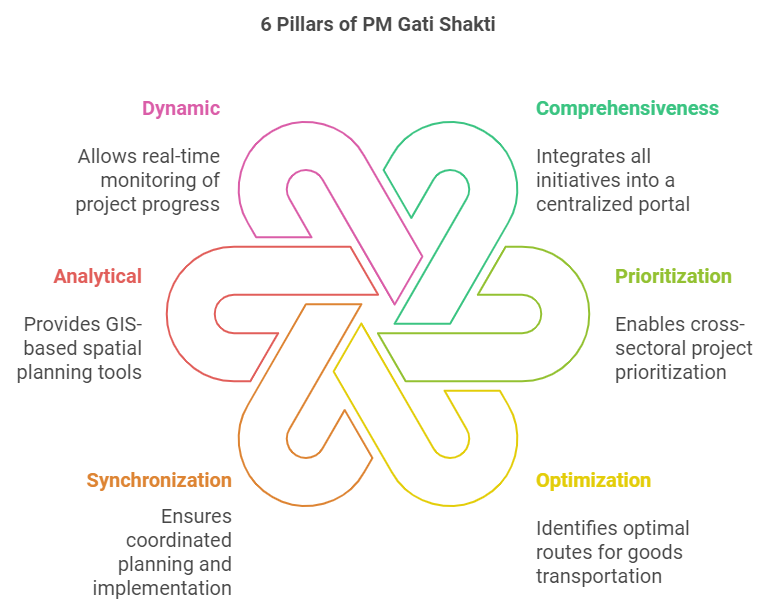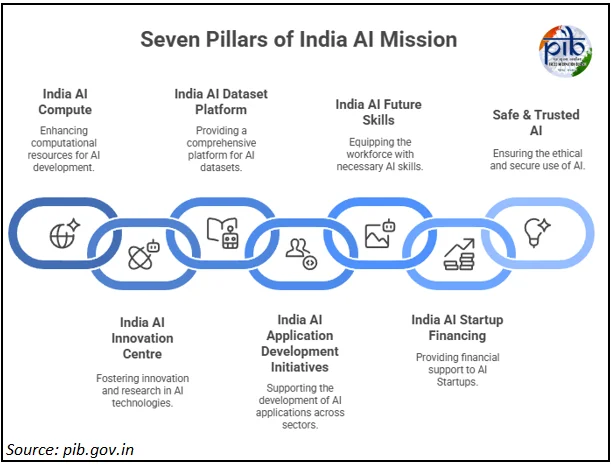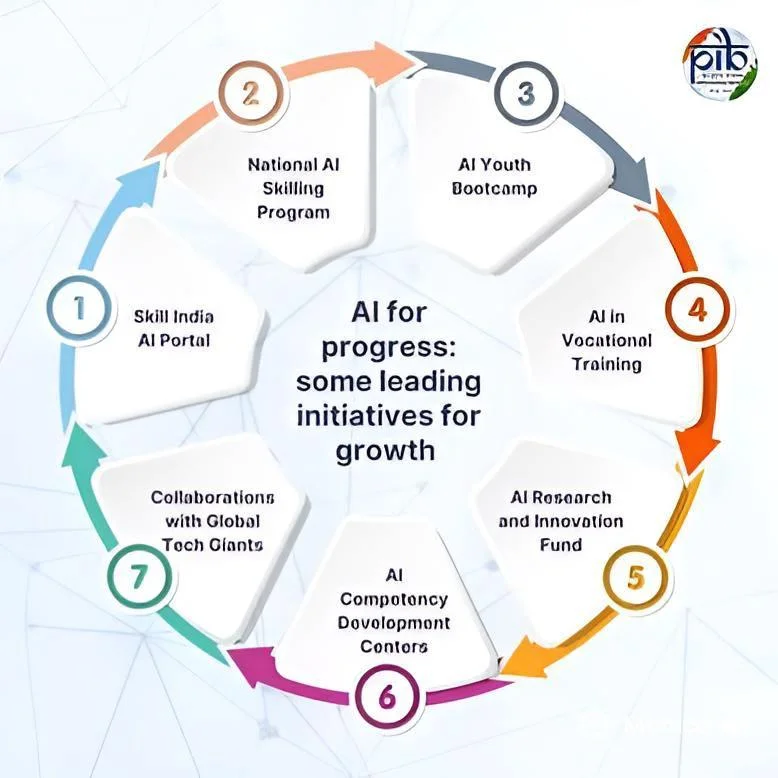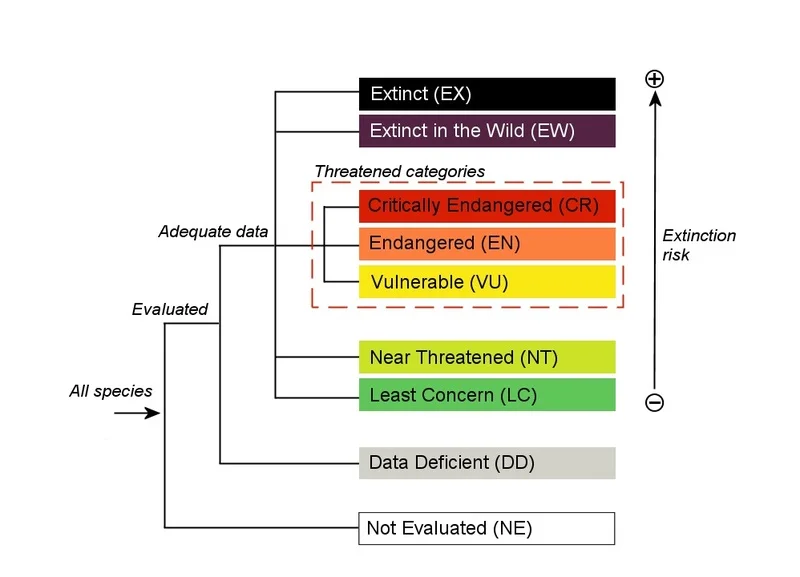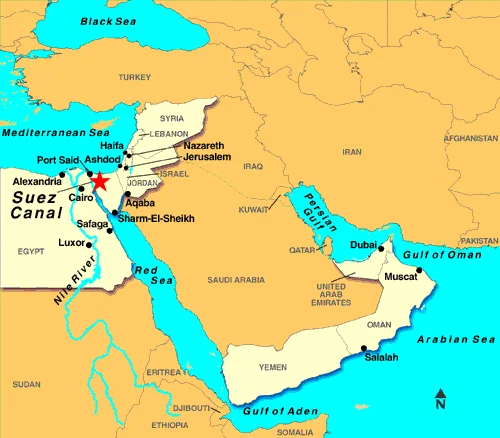Agriculture
Natural Farming in India
For Prelims: Natural farming, Zero budget natural farming, Bhartiya Prakritik Krishi Paddhati, SDG 12 (Sustainable Consumption and Production)
For Mains: Principles, practices, and benefits of natural/chemical-free farming, Challenges in mainstreaming natural farming in India.
Why in News?
Himachal Pradesh is witnessing a major shift as thousands of farmers move away from chemical-based agriculture toward natural farming. This transition reflects India’s wider push for sustainable and eco-friendly agriculture.
What is Natural Farming?
- Definition: As per NITI Aayog, Natural Farming is “a chemical-free traditional farming method” rooted in agroecological principles integrating crops, trees, livestock, and functional biodiversity.
- It follows the philosophy of working with nature, emphasizing minimal human intervention (often referred to as “do-nothing farming”) and the complete avoidance of synthetic chemicals.
- Key Features and Principles:
- No External Chemical Inputs: Completely avoids chemical fertilizers, pesticides, herbicides, and growth regulators.
- On-farm Input Generation: It relies on agricultural inputs such as Neemastra, Agniastra, Jeevamrit, and Beejamrit, which are locally prepared on farms using materials like cow dung, cow urine, jaggery, gram flour, and soil.
- Livestock Integration: Native cow breeds are central for sourcing inputs and maintaining the nutrient cycle.
- Diversified Cropping System: Encourages intercropping, mixed cropping, agroforestry, and crop rotation.
- Soil Health and Biodiversity: Emphasizes mulching, cover cropping, and maintaining microbial activity for fertile and living soil.
- Water efficiency: Uses minimal irrigation and improves soil moisture retention naturally.
- Scientific and Environmental Benefits: Enhances soil organic carbon and soil fertility, reducing the need for synthetic inputs.
- Promotes biodiversity, including beneficial insects, pollinators, and soil organisms.
- Reduces greenhouse gas emissions by avoiding urea and other nitrogenous fertilizers.
- Improves climate resilience of farms, especially under drought and erratic rainfall conditions.
How is Natural Farming Benefiting Farmers and Rural Livelihoods in India?
- Reduced Cost of Cultivation: Natural farming is not just an ecological alternative but also offers tangible socio-economic benefits to Indian farmers. The Zero budget natural farming (ZBNF) is the most popular model in India.
- The cost of inputs under natural farming is 50–60% lower than conventional chemical farming.
- Farmers significantly save on input costs since bio-inputs are prepared on-farm using locally available resources.
- Improved Farmer Incomes: Though initial yields may be stable or slightly reduced, long-term productivity is sustained or increased due to improved soil health.
- Income stability is achieved through intercropping, value-added products, and reduced crop failure risk.
- Employment Generation: Encourages local entrepreneurship in bio-input production, seed banks, composting, and local market chains. Promotes rural youth participation by making agriculture more knowledge-based and sustainable.
- Health and Food Security: Natural produce is free from harmful pesticide residues, ensuring better nutrition and food safety.
- Enhances nutritional density of food, addressing concerns of hidden hunger and health disorders due to chemicals.
- Women Empowerment: Involves women in preparation of bio-inputs, composting, kitchen gardening, and farmer producer groups.
What are India’s Initiatives for Natural Farming?
- National Mission on Natural Farming (NMNF): A centrally sponsored scheme by the Ministry of Agriculture & Farmers Welfare, promoting chemical-free, ecosystem-based natural farming rooted in traditional knowledge.
- The NMNF targets 7.5 lakh hectares across 15,000 clusters and aims to facilitate 1 crore farmers.
- An incentive of Rs 4,000 per acre per year for two years is being provided to encourage adoption of natural farming practices.
- NMNF builds on the earlier Bhartiya Prakritik Krishi Paddhati (BPKP) under the Paramparagat Krishi Vikas Yojana (PKVY).
- Bhartiya Prakritik Krishi Paddhati (BPKP): As of March 2025 it supports 28 lakh farmers practicing natural farming on 9.4 lakh hectares.
- State-Level Initiatives:
What are the Key Challenges in Mainstreaming Natural Farming Across India?
- Knowledge and Skill Gaps: Natural farming is knowledge-intensive and site-specific, requiring farmers to understand ecological interactions and adopt new practices.
- Many farmers, especially in remote areas, lack practical understanding and require continuous handholding by Krishi Sakhis.
- Behavioural Resistance: Farmers accustomed to high-input, chemical-intensive practices often hesitate to shift to low-input, labour-intensive natural farming.
- State-Level Variability: Successful models exist in Himachal Pradesh, Andhra Pradesh, Gujarat, etc., but soil, climate, and social conditions vary, making uniform replication challenging.
- Policy Convergence Complexity: Coordinating NMNF with other central/state schemes (livestock, rural development, AYUSH, food processing) and local institutions is administratively challenging.
- Market Linkages and Premium Pricing: Establishing reliable markets for chemical-free produce remains a challenge.
- Farmers may hesitate to switch if premium pricing and assured minimum support price (MSP) are not consistently available.
- Input Availability and Infrastructure: Ensuring timely availability of bio-inputs across all regions, especially remote areas, requires robust Bio-input Resource Centres (BRCs) and supply chains.
What Measures can be Adopted to Scale Natural Farming in India?
- Decentralized Farmer Clusters: Form contiguous natural farming clusters to enable peer learning, reduce input costs, and facilitate community-level extension support.
- Strengthen Knowledge Networks: Deploy Krishi Sakhis, Community Resource Persons, and KVKs to provide hands-on training in NF techniques, bio-input preparation, pest management, and multi-cropping.
- Bio-input Accessibility: Establish local Bio-input Resource Centres (BRCs) and promote on-farm production of organic inputs to reduce dependency on external chemical inputs.
- Market Integration and Certification: Develop PGS/organic certification, promote a national brand for NF produce, and strengthen linkages with Agricultural Produce Market Committees (APMCs), Farmer Producer Organizations (FPOs), and local markets to ensure fair pricing.
- Agro-ecology Based Research: Tailor region-specific NF cropping systems and soil-moisture management practices to enhance resilience in varied agro-climatic zones.
- Digital Monitoring and Knowledge Sharing: Use geo-tagged tracking, online portals, and mobile advisory services to monitor adoption, yields, and ecological outcomes while providing timely guidance.
Conclusion
Natural farming promotes nutrient-rich, chemical-free food while reducing input costs for farmers. It aligns with India’s broader sustainability goals, supporting SDG 2 (Zero Hunger) by improving food security, and SDG 12 (Sustainable Consumption and Production) by encouraging eco-friendly agricultural practices.
|
Drishti Mains Question: Examine the role of natural farming in promoting sustainable agriculture and improving farmer livelihoods in India. |
Frequently Asked Questions (FAQs)
1. What is Natural Farming?
Natural Farming is a chemical-free, traditional farming system integrating crops, livestock, and biodiversity to enhance soil health and ecological balance.
2. What is the National Mission on Natural Farming (NMNF)?
NMNF is a centrally sponsored scheme launched in 2024 to promote chemical-free, ecosystem-based natural farming, covering 7.5 lakh hectares and supporting 1 crore farmers.
3. Which bio-inputs are commonly used in Natural Farming?
Locally prepared inputs like Beejamrut, Jeevamrit, Neemastra, and Agniastra are used, made from cow dung, cow urine, jaggery, gram flour, and soil.
UPSC Civil Services Examination, Previous Year Question (PYQ)
Prelims
Q. How is permaculture farming different from conventional chemical farming? (2021)
- Permaculture farming discourages monocultural practices but in conventional chemical farming, monoculture practices are predominant.
- Conventional chemical farming can cause an increase in soil salinity but the occurrence of such phenomenon is not observed in permaculture farming.
- Conventional chemical farming is easily possible in semi-arid regions but permaculture farming is not so easily possible in such regions.
- Practice of mulching is very important in permaculture farming but not necessarily so in conventional chemical farming.
Select the correct answer using the code given below.
(a) 1 and 3
(b) 1, 2 and 4
(c) 4 only
(d) 2 and 3
Ans: (b)
Q. Consider the following agricultural practices: (2012)
- Contour bunding
- Relay cropping
- Zero tillage
In the context of global climate change, which of the above helps/help in carbon sequestration/storage in the soil?
(a) 1 and 2 only
(b) 3 only
(c) 1, 2 and 3
(d) None of them
Ans: (b)


Facts for UPSC Mains
PM GatiShakti National Master Plan
Why in News?
On the occasion of celebrating 4 years of the PM GatiShakti National Master Plan (NMP), the government has opened its PM GatiShakti portal to the private sector, aiming to enhance last-mile delivery services and infrastructure development.
- PM GatiShakti portal is developed by Bhaskaracharya National Institute for Space Applications and Geo-informatics (BISAG-N).
What is PM GatiShakti National Master Plan?
About:
- Launched in October 2021, it is a Rs 100 lakh crore investment initiative for infrastructure development over the next five years.
- It promotes integrated development across seven economic drivers—railways, roads, ports, waterways, airports, mass transport, and logistics—supported by energy, IT, water, and social infrastructure.
Objective:
- It aims to cut logistics costs through integrated infrastructure planning.
- Acting as a digital backbone, it bridges macro-level planning and micro-level implementation, links existing schemes (Bharatmala, Sagarmala, UDAN), and connects economic zones to boost business competitiveness.
Foundational Pillars:
Key Features:
- Geospatial Data Platform: It integrates 200+ layers of geospatial data onto a centralized portal, enabling users to visualize multi-layered data for a holistic view of existing and planned assets.
- Economic Hubs: Targets textile clusters, pharmaceutical hubs, defence corridors, and agricultural zones to boost productivity.
- Tech-Driven Planning: Uses advanced spatial tools and ISRO satellite imagery by BISAG-N for data-driven project management.
Targets:
- Aviation Infrastructure: Plan includes 200 new airports, heliports, and water aerodromes to support aviation.
- Renewable Energy: Increase renewable capacity to 225 GW by FY25 and complete 17,000 km of gas pipelines.
- Power Grid Expansion: Extend the power grid with 454,200 circuit km of lines.
- National Highway Network: Aim to expand to 200,000 km of national highways.
- Rail Cargo Capacity: Target to grow rail cargo capacity to 1,600 tons by FY25.
Key Achievements:
- Unified Government Platform: Integrates 44 Central Ministries and 36 States/UTs on a single platform with over 1,600 data layers for cohesive planning.
- Project Evaluation: The Network Planning Group (NPG) has evaluated over 200 big-ticket projects based on PM GatiShakti's principles of multimodal integration and last-mile connectivity.
- Social Sector Development: The platform is being extended to plan social infrastructure—identifying gaps and enabling better placement of schools, hospitals, and anganwadis, especially in remote areas.
- Boosting Trade & Logistics: Aligned with the National Logistics Policy, 2022, it has helped improve India's rank on the World Bank Logistics Performance Index to 38th in 2023, a significant rise from 44th in 2018.
What are the Key Challenges Facing PM GatiShakti, also Suggest Measures to Address Them?
|
Challenges (Mnemonic: BLOCK) |
Way Forward (Mnemonic: SCALE) |
|
B - Bureaucratic Silos: Deep-rooted silos and bureaucratic resistance hinder the seamless data sharing and inter-ministerial coordination that GatiShakti requires. |
S - Standardize Data Systems: Enforce standardized data protocols, establish clear data ownership and accountability, and mandate regular audits for accuracy and timely updates. |
|
L - Land & Legal Hurdles: Despite integrated planning, land acquisition and obtaining numerous statutory clearances remain a major source of project delays. |
C - Create Collaborative Incentives: Create performance metrics that reward inter-departmental collaboration and successful integrated project outcomes. |
|
O - Operational Data Gaps: Different ministries/states may have varying data standards, formats, and update frequencies, leading to unreliable insights. |
A - Advance Technical Training: Launch nationwide training programs for officials at all levels. Develop simplified user interfaces and provide dedicated technical support cells to ensure effective platform utilization. |
|
C - Capacity & Skill Shortage: Many state and local agencies lack the technical infrastructure and skilled personnel to effectively use the advanced GIS and analytics platform. |
L - Link Approval Processes: Use GatiShakti to identify land-related issues at the planning stage. Integrate with other government portals (e.g., PARIVESH) for faster, parallel processing of clearances. |
|
K - Kinetic Action Delay: Ensuring that the real-time data from the platform leads to timely interventions and corrective actions on stalled projects is a challenge. |
E - Enforce Monitoring Mechanisms: Strengthen the Network Planning Group (NPG) mandate to include monitoring and troubleshooting. Implement an escalation matrix for unresolved bottlenecks. |
|
Drishti Mains Question: Evaluate the significance of PM GatiShakti in improving last-mile connectivity and reducing logistics costs. |
Frequently Asked Questions (FAQs)
1. What is the PM GatiShakti National Master Plan?
Launched in October 2021, it is a Rs 100 lakh crore initiative integrating 16 ministries for coordinated infrastructure planning and improved logistics efficiency.
2. What are the key engines of growth under PM GatiShakti?
Railways, Roads, Ports, Waterways, Airports, Mass Transport, and Logistics Infrastructure, supported by energy, IT, bulk water, and social infrastructure.
3. What are the major achievements of PM GatiShakti?
Integration of 44 ministries and 36 states/UTs, evaluation of 200+ projects, enhanced social infrastructure planning, and improved World Bank Logistics Performance Index ranking to 38th in 2023.
UPSC Civil Services Examination, Previous Year Questions (PYQs)
Prelims
Q. With reference to ‘National Investment and Infrastructure Fund’, which of the following statements is/are correct? (2017)
- It is an organ of NITI Aayog.
- It has a corpus of `4,00,000 crore at present.
Select the correct answer using the code given below:
(a) 1 only
(b) 2 only
(c) Both 1 and 2
(d) Neither 1 nor 2
Ans: (d)
Q. In India, the term “Public Key Infrastructure” is used in the context of (2020)
(a) Digital security infrastructure
(b) Food security infrastructure
(c) Health care and education infrastructure
(d) Telecommunication and transportation infrastructure
Ans: (a)
Mains
Q. “Investment in infrastructure is essential for more rapid and inclusive economic growth.” Discuss in the light of India’s experience. (2021)


Facts for UPSC Mains
Safe and Trusted AI Ecosystem in India
Why in News?
The Ministry of Electronics and IT (MeitY), under its IndiaAI Mission, has selected five pioneering projects under the Safe & Trusted AI pillar, targeting deepfake detection, bias mitigation, and security evaluation.
- IndiaAI, an Independent Business Division under MeitY, is the implementation agency for the IndiaAI Mission. It aims to democratize AI benefits across all strata of society, and ensure the ethical and responsible use of AI.
What are the Key Projects under IndiaAI’s Safe & Trusted AI Pillar?
- Deepfake Detection:
- Saakshya (IIT Jodhpur & IIT Madras): Real-time multi-agent framework using retrieval-augmented generation (RAG) to detect and govern deepfakes, protecting against misinformation and digital fraud.
- AI Vishleshak (IIT Mandi): Enhanced audio-visual deepfake and handwritten signature forgery detection with adversarial robustness and explainability, aiding forensic accuracy.
- Real-Time Voice Deepfake Detection (IIT Kharagpur): Tools to detect synthetic voice manipulations, securing communication channels and preventing identity fraud.
- Bias Mitigation:
- Evaluating Gender Bias in Agricultural LLMs (Digital Futures Lab & Karya): Benchmarks and mitigates gender bias in AI models for agriculture, fostering fair and inclusive AI applications benefiting women farmers and rural communities.
- Penetration Testing and Evaluation:
- Anvil (IIIT Dharwad): A penetration testing and evaluation tool for LLMs and generative AI, enhancing AI system security and resilience against adversarial attacks.
How is the IndiaAI Mission Fostering a Responsible AI ecosystem in India?
The seven pillars of the IndiaAI Mission aim to ensure responsible and safe AI deployment in India.
- IndiaAI Compute Pillar : This pillar provides high-end GPUs at affordable costs.
- These GPUs are available at a subsidized rate of just ₹65 per hour.
- IndiaAI Application Development Initiative : This pillar develops AI applications for India-specific challenges.
- Sectors include healthcare, agriculture, climate change, governance, and assistive learning technologies.
- AIKosh (Dataset Platform) : AIKosh develops large datasets for training AI models. It integrates data from government and non-government sources.
- IndiaAI Foundation Models : This pillar develops India’s own Large Multimodal Models using Indian data and languages.
- It ensures sovereign capability and global competitiveness in generative AI.
- IndiaAI FutureSkills : This pillar builds AI-skilled professionals.
- IndiaAI Startup Financing : This pillar provides financial support to AI startups.
- The IndiaAI Startups Global program launched in March 2025.
- Safe and Trusted AI : This pillar ensures responsible AI adoption with strong governance.
- Focus areas: machine unlearning, bias mitigation, privacy-preserving ML, explainability, auditing, governance testing.
AI Ecosystem in India
- Tech Sector Growth: Annual revenues projected to cross USD 280 billion in 2025.
- Employment: Over 6 million professionals are employed in the tech and AI ecosystem.
- Global Capability Centres (GCCs): India hosts 1,800+ GCCs, with 500+ focused on AI.
- Startup Landscape: Approximately 1.8 lakh startups in India; 89% of new startups last year incorporated AI into products/services.
- AI Adoption: On the NASSCOM AI Adoption Index, India scores 2.45/4, with 87% of enterprises actively using AI solutions.
- Leading Sectors: Key adopters include industrial & automotive, consumer goods & retail, BFSI, and healthcare, contributing around 60% of AI’s total value.
- AI Maturity: About 26% of Indian companies have achieved AI maturity at scale (BCG survey).
| Click here to Read: India’s AI Revolution |
|
Drishti Mains Question: Discuss the role of IndiaAI in ensuring responsible AI deployment, mitigating biases, and safeguarding citizen rights in India’s AI ecosystem. |
Frequently Asked Questions (FAQs)
Q1.What is the objective of IndiaAI’s Safe & Trusted AI Mission?
IndiaAI aims to strengthen safe, trusted, and ethical AI, promoting responsible deployment, inclusive governance, and technological self-reliance across India.
Q2.Which key projects have been selected under IndiaAI’s Safe & Trusted AI pillar?
Five projects include Saakshya, AI Vishleshak, Real-Time Voice Deepfake Detection, Evaluating Gender Bias in Agricultural LLMs, and Anvil.
Q3.What is the current status of AI adoption and ecosystem in India?
India has a USD 280 billion tech sector, employs over 6 million professionals, hosts 1,800+ GCCs, and sees 87% of enterprises actively using AI, with 26% achieving AI maturity at scale.
UPSC Civil Services Examination Previous Year Question (PYQ)
Prelims:
Q. With the present state of development, Artificial Intelligence can effectively do which of the following? (2020)
- Bring down electricity consumption in industrial units
- Create meaningful short stories and songs
- Disease diagnosis
- Text-to-Speech Conversion
- Wireless transmission of electrical energy
Select the correct answer using the code given below:
(a) 1, 2, 3 and 5 only
(b) 1, 3 and 4 only
(c) 2, 4 and 5 only
(d) 1, 2, 3, 4 and 5
Ans: (b)
Mains:
Q. Introduce the concept of Artificial Intelligence (AI). How does Al help clinical diagnosis? Do you perceive any threat to privacy of the individual in the use of AI in healthcare? (2023)


Important Facts For Prelims
National ‘Red List’ Assessment Initiative
Why in News?
India launched the five-year National Red List Assessment Initiative (2025-2030) to evaluate the conservation status of its flora and fauna, announced at the IUCN World Conservation Congress in Abu Dhabi.
What is the National ‘Red List’ Assessment Initiative?
- About: It aims to systematically identify and protect India’s most vulnerable species, in line with global environmental commitments, and IUCN standards.
- It will evaluate the extinction risk of approximately 11,000 species—including 7,000 flora and 4,000 fauna—to develop a National Red List.
- Implementing Bodies: It will be spearheaded by the Union Ministry of Environment, Forest and Climate Change, with key implementing bodies including the Botanical Survey of India (BSI), Zoological Survey of India (ZSI), and the Wildlife Institute of India (WII).
- Global Biodiversity Commitments: It will fulfill Target 4 of the Kunming-Montreal Global Biodiversity Framework (KM-GBF), which calls for halting species extinction, protecting genetic diversity, and managing human-wildlife conflicts.
- As a signatory to the Convention of Biological Diversity (CBD), India is obligated to monitor and conserve its biodiversity, and this assessment provides the essential scientific basis for that effort.
- India's Species Endemism & Status: Of the assessed fauna, 13.4% are threatened, 289 species are near threatened, and 13.8% are data deficient, with their conservation status unknown.
- India exhibits high endemism, with 79% of amphibians and 54.9% of reptiles found nowhere else in the wild.
International Union for Conservation of Nature (IUCN)
- About: The IUCN is a membership union uniquely comprising both government and civil society organizations.
- Since its creation in 1948, IUCN has evolved into the world’s largest and most diverse environmental network.
- Role: Headquartered in Gland, Switzerland, it serves as the global authority on the status of the natural world and the actions needed to protect it.
- Red List: The IUCN oversees the Red List of Threatened Species, the most comprehensive global inventory of the conservation status of plants and animals.
- The Red List Categories reflect a species’ risk of extinction. The nine categories are outlined below:
- IUCN World Conservation Congress: The IUCN World Conservation Congress, often called the Olympics of Conservation, is the world’s largest and most important conservation event.
- It is held once every four years, with the 2025 edition being held in Abu Dhabi, United Arab Emirates.
- It aims to conserve the environment, address global sustainability challenges, and improve natural resource management for human, social, and economic development.
Frequently Asked Questions (FAQs)
1. What is the IUCN Red Data List?
The IUCN Red List is a global database maintained by the International Union for Conservation of Nature (IUCN) that assesses the conservation status of species.
2. What is the objective of India’s National Red List Assessment Initiative?
To evaluate the extinction risk of 11,000 species and develop a National Red List, supporting biodiversity conservation aligned with IUCN standards.
3. Which bodies are implementing the National Red List Assessment in India?
The Union Ministry of Environment, Forest and Climate Change, in collaboration with BSI, ZSI, and WII, leads the assessment.
4. What percentage of India’s species has been globally assessed by the IUCN so far?
Only 7.2% of fauna and 6.33% of plants (including algae, fungi, and microbes) have been assessed, highlighting significant data gaps.
UPSC Civil Services Examination, Previous Year Question (PYQ)
Q. Consider the following pairs (2019)
Wildlife : Naturally found in
- Blue-finned Mahseer : Cauvery River
- Irrawaddy Dolphin : Chambal River
- Rusty-spotted Cat : Eastern Ghats
Which of the pairs given above are correctly matched?
(a) 1 and 2 only
(b) 2 and 3 only
(c) 1 and 3 only
(d) 1, 2 and 3
Ans: (c)
Q. Which one of the following is not a site for in-situ method of conservation of flora? (2011)
(a) Biosphere Reserve
(b) Botanical Garden
(c) National Park
(d) Wildlife Sanctuary
Ans: (b)


Rapid Fire
National Household Income Survey (NHIS) 2026
The Ministry of Statistics & Programme Implementation (MoSPI) plans to launch the National Household Income Survey (NHIS) in February 2026.
- NHIS 2026 will be the first-ever pan-India household income survey. This survey will enable inter-personal income comparisons and detailed analysis of income sources, addressing a long-standing data gap in India’s socio-economic statistics.
- Purpose: NHIS 2026 aims to capture living conditions, income and expenditure patterns, and provide critical data for rebasing the Consumer Price Index (CPI), preparing National Accounts, and conducting poverty and hardship analysis.
- The National Statistics Office (NSO) under MoSPI has conducted large-scale household surveys since 1950.
- The National Sample Survey (NSS) provides key official statistics on household welfare, consumption, employment, health, assets, and indebtedness, supporting evidence-based policymaking.
- Global Context: Countries like the US, Canada, UK, Sri Lanka, Bangladesh, China, and Malaysia already collect household income data through surveys. The NHIS will bring India in line with these international best practices.
| Read more: Strengthening India's Statistical Syste |


Place In News
Sharm el-Sheikh
World leaders have convened at Sharm el-Sheikh, Egypt, for the ‘Summit for Peace’, led by U.S. President Donald Trump. The meeting aims to end the two-year-long Gaza conflict and to restore stability in the Middle East.
Sharm el-Shaikh: Location and Significance
- Location: It is located at the southern tip of the Sinai Peninsula, overlooking the Strait of Tiran at the mouth of the Gulf of Aqaba, along the Red Sea.
- The Strait of Tiran, connecting the Red Sea and the Gulf of Aqaba, is a vital maritime route and Israel’s sole access to the Indian Ocean.
- Originally a fishing village, the town became a strategic naval base for the Egyptian Navy and later a major international diplomatic venue.
- Historical Background: Israel occupied Sharm el-Sheikh during the Six-Day War in 1967 and returned it to Egypt in 1982 following the Camp David Accords.
- Egyptian President Hosni Mubarak designated it as the “City of Peace” in 1982, promoting international investment and tourism.
- Sharm el-Sheikh as a Diplomatic Hub: Sharm el-Sheikh has become a major diplomatic hub, hosting landmark peace talks and global summits central to Middle Eastern diplomacy. The city has hosted several major global summits:
- Israel–Palestine Peace Talks (1999)
- First EU–Arab League Summit (2019)
- UN Climate Change Conference – COP27 (2022): COP27 led to the creation of a loss and damage fund for climate change.
- Summit for Peace (2025) – Current meeting focused on ending the Gaza conflict.
| Read More: USA's Comprehensive Plan to End Gaza Conflict |


Rapid Fire
Information Technology(IT) Act, 2000
The Ministry of Electronics and IT (MeitY) organised a national workshop to streamline the issuance of notices under Sections 69A and 79(3)(b) of the Information Technology Act, 2000, ensuring legal clarity and constitutional balance in regulating content on digital platforms.
IT Act, 2000
- About: The Information Technology Act, 2000, is the primary legislation in India governing cyber activities, including electronic commerce, digital signatures, and cybercrimes.
- Key Features:
- Legitimizes electronic records and digital signatures.
- Establishes CERT-In as a nodal agency for cybersecurity.
- Defines responsibilities of intermediaries (e.g., social media platforms).
- Enables formation of the Appellate Tribunal for dispute resolution.
- Key Provisions:
- Section 69A: Empowers the government to block public access to any information through any computer resource if it threatens national security, public order, or relations with foreign states.
- Section 79: Grants safe harbour protection to intermediaries, shielding them from liability for user-generated content.
- Section 79(3)(b): Removes safe harbour protection if an intermediary fails to block/remove unlawful content upon government notification.
- Rule 3(1)(d) of the IT Rules, 2021: Specifies the due diligence to be observed by intermediaries, including the requirement to remove or disable access to unlawful information upon receiving actual knowledge.
- Section 66A: The Supreme Court, in the landmark case Shreya Singhal vs. Union of India(2015), struck down Section 66A of the IT Act, 2000. The Court held the provision "vague" and "unconstitutional", stating it imposed arbitrary restrictions on freedom of speech under Article 19(1)(a).
- Importance:
- These provisions are central to balancing state regulation, user rights, and platform responsibilities in India’s digital ecosystem.
| Read More: Strengthening India’s Cyber Defense |


Rapid Fire
BHARAT TAXI
India is set to launch Bharat Taxi, a first-of-its-kind, cooperative-based, citizen-first national ride-hailing platform. It aligns with the Digital India vision of inclusive, tech-enabled, and transparent public services.
Bharat Taxi
- Collaboration: The initiative is a collaboration between the National e-Governance Division (NeGD), Digital India Corporation, Ministry of Electronics & Information Technology (MeitY), and Sahakar Taxi Cooperative Limited.
- Aim: The partnership aims to create a secure, interoperable, and citizen-centric mobility platform for India.
- Features:
- Bharat Taxi will be integrated with DigiLocker, UMANG, and API Setu to ensure seamless identity verification and service delivery.
- The platform will adhere to Government of India data protection norms and follow robust cybersecurity standards.
- The platform will offer multilingual interfaces and inclusive access features to ensure usability for all citizens.
| Read More: National e-Governance Division (NeGD) |



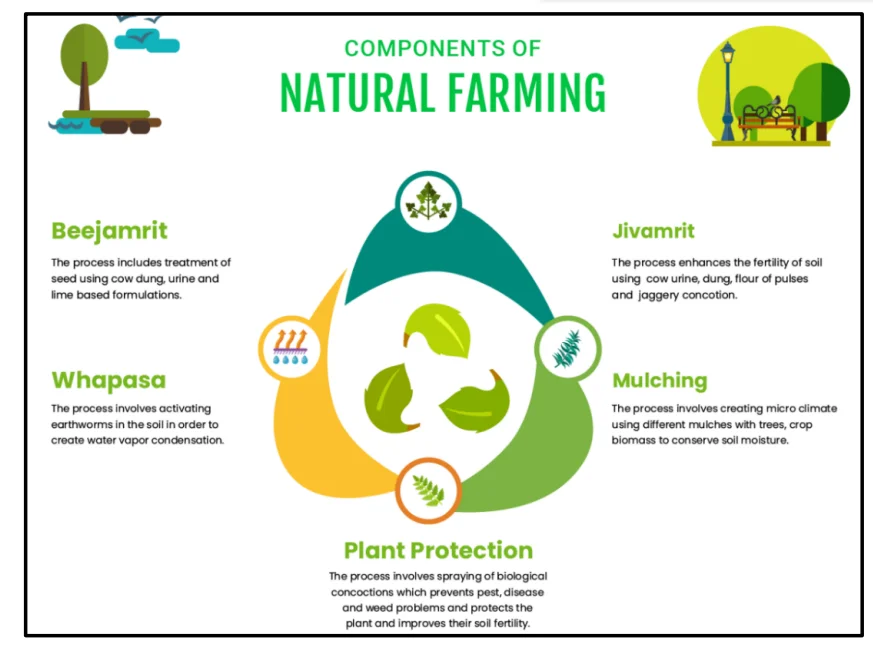

.webp)
